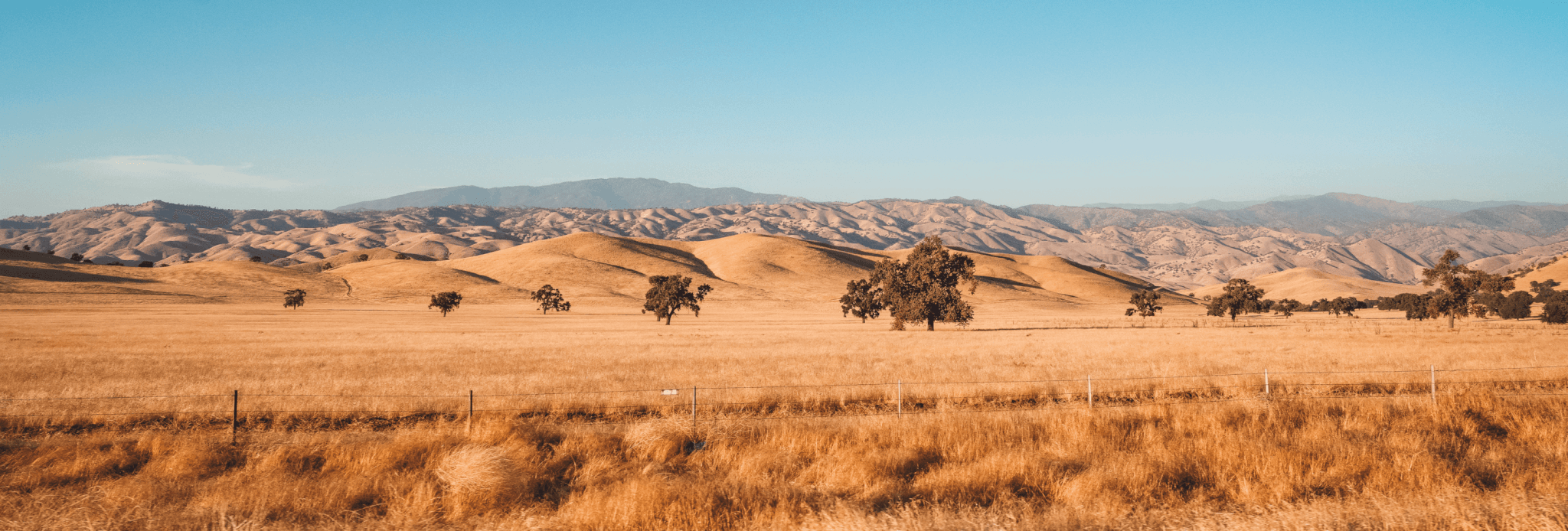
Today, the U.S. federal government awarded $1.2 billion to, in the words of the Biden-Harris administration, “kick start America’s carbon dioxide removal industry.” The U.S. Department of Energy also announced funding for 19 other projects, including two in California’s Kern County that ClimateWorks has been supporting for nearly three years. The first round of funding for these projects provides resources to begin designing and planning direct air capture hubs. For the community of Kern County, this new federal funding offers them an opportunity to become a national leader in direct air capture (DAC).
Kern County, located in the southern end of California’s Central Valley, has both the worst air quality in the United States and tops national lists for the highest amount of daily particulate matter. The fossil fuel industry looms large as 70% of California’s oil and 78% of the state’s natural gas is produced in this one county.
Instead of paying workers to extract oil from the ground, a DAC hub in Kern County would create new jobs to remove and store existing carbon dioxide that is warming the planet to unprecedented levels.
Billions in federal funding, millions in federal funding for California DAC
While the news is largely focused on two big efforts in Texas and Louisiana that received the $1.2 billion prize, ClimateWorks is particularly pleased to see federal support for two projects we have been supporting in Kern County. Community Alliance for Direct Air Capture (CALDAC) received nearly $3 million to perform a feasibility study and center community engagement; and California DAC Hub Consortium received nearly $12 million to develop design and planning studies to advance a DAC hub with low to zero-carbon emitting energy sources. The funding for these two projects totals $14.6 million in federal funding.
The first funding announcement came in December 2022, when the U.S. Department of Energy announced $3.5 billion to develop four domestic regional DAC hubs. The money is financed through the Bipartisan Infrastructure Law and came on the heels of other major shows of support for the carbon dioxide removal industry from the government.
The Department of Energy also created the Carbon Negative Shot, an effort to reduce the cost of technological carbon removal solutions to $100 per ton, a level that is more feasible to scale. Additionally, the Inflation Reduction Act (IRA) provided $2 billion for natural CDR and expanded 45Q tax credits supporting carbon removal technologies that could deliver up to $100 billion in new investments.
In addition to this support, the State of California is supporting nascent removal technology to fulfill just, equitable net neutrality laws signed by Governor Newsom late last year — laws that ClimateWorks grantees helped to inform.
Direct Air Capture (DAC)
Direct Air Capture (DAC) is a nascent technology with the potential to remove carbon dioxide directly from the ambient air. It first extracts carbon dioxide directly from the atmosphere, then stores it deep in the ground or uses the gas to create plastics, methane, or a range of other products.
“DAC is a sustainable solution for a place historically dependent on polluting oil extraction, as Kern County is home to 70% of the state’s oil production,” said Jan Mazurek, Senior Director of Carbon Dioxide Removal, ClimateWorks Foundation. “DAC offers a clean, safe, and just way for Kern to transition to high-paying jobs, keeping oil in the ground, and safely putting carbon dioxide back where it belongs. DAC Hubs are also a chance for California to continue demonstrating climate leadership by example and encourage federal support for climate tools that the IPCC and United Nations both say we need in place by mid-century.”
Major climate organizations including the Intergovernmental Panel on Climate Change and the National Academies of Science agree that, in addition to taking today’s carbon dioxide emissions to zero, we also need to remove some existing CO2 in the atmosphere, which has helped to drive global temperatures to nearly 1.1° C, a sliver below where the UN says we need to be to avoid dangerous warming impacts. Last month, July 2023, was the hottest month on record, and in recent years, we have seen a wide array of related climate disasters.
An opportunity to scale DAC responsibly
The ClimateWorks CDR Program and our grantee partners have advocated for a game-changing DAC hub in California. ClimateWorks supported two DAC proposals in Kern County that are community-minded and focused on sourcing low to zero-carbon emitting energy — a perfect fit for this venture that is well-suited to have a long-term sustainable impact on communities.
“Kern County is in a prime position to lead California’s clean energy transition,” said Sam Uden, Director of Climate and Energy Policy at Conservation Strategy Group. “The DAC Hub Consortium, which brings together a diverse array of community partners, is a key opportunity to support the local workforce and deploy carbon management in the state.”
DAC at the Kern County site would be based on a modular Swiss technology that can be powered by low-grade geothermal heat otherwise too poor to serve as a source of electricity. The region’s geology, which has produced oil for years, is exceptionally well-suited to safely lock carbon dioxide removed from the skies for tens of thousands of years — the time it will take the planet to fully stabilize the climate — as carbon storage facilities already exist.
ClimateWorks is also funding another effort to establish a DAC hub in California’s southern San Joaquin Valley. To support this project, led by the Center for Law, Energy, and the Environment (CLEE) at the University of California, Berkeley, our partners have engaged stakeholders, provided resources on DAC, and hosted listening sessions with the local community.
Funding for an equitable transition
Our grantee partners including Project 2030, Conservation Strategy Group, and the Livermore Lab Foundation have been working in Kern County for a number of years in order to help pave the way for a DAC hub that can help the region justly transition from oil extraction to a place that allows California achieve its net neutrality goals. Grants from ClimateWorks funders allowed our grantees to lay this groundwork in Kern, which will be amplified by the new federal funding.
“Direct Air Capture (DAC) is essential to decarbonizing the planet,” said Diane Doucette, Co-Founder and President of Project 2030. “DAC hubs can be transformative ways to manage carbon emissions if designed and operated in an equitable manner. DAC hubs, including those in Kern County, must be implemented with local buy-in to benefit all communities in California. Keeping people at the forefront of policy decisions will take the burden off impacted communities and ensure a clean energy transition.”
Our grantees garnered broader support and conducted outreach, focusing on equity, justice, and the intersection of DAC with job creation and economic recovery. Together, they translated knowledge on DAC to organize workshops, listening sessions, and outreach materials tailored to the diverse demographics of Kern County. Grantees also conducted thorough research to ensure that DAC deployment has no adverse social or health impacts on local communities.
“Our research indicates Kern County residents do support California’s carbon neutrality goals and absolutely want the region to benefit from the nation’s energy transition,” said Sally Allen, Executive Director of the Livermore Lab Foundation. “But permanent and good-paying jobs, equitable community input, and thorough project and environmental reviews are paramount to true success. The DAC Hubs represent a unique opportunity to not only inform but inspire the next generation of scientists and engineers. Education is power and the investments we collectively make today are critical to a successful energy future.”
Uplifting climate and communities
When implemented responsibly, carbon removal solutions can transform local communities and make a global impact on the climate, bringing us closer to net neutrality. The major presence of the fossil fuel industry in Kern County means there is also a large workforce that will need to transition to green jobs as the country moves beyond oil and gas. A DAC hub would provide job opportunities with a similar skillset to existing oil industry jobs and would move Kern County from a resource-dependent community to a leader in climate solutions. This technology would also help to address the harmful air pollution that plagues the region.
This project would provide a great example of the importance of coordination between philanthropic, private, and public funding of climate solutions. With rigorous preparation and responsible implementation, as supported by our grantees, the DAC hub in Kern County would leverage federal resources and the Biden administration’s climate leadership.


